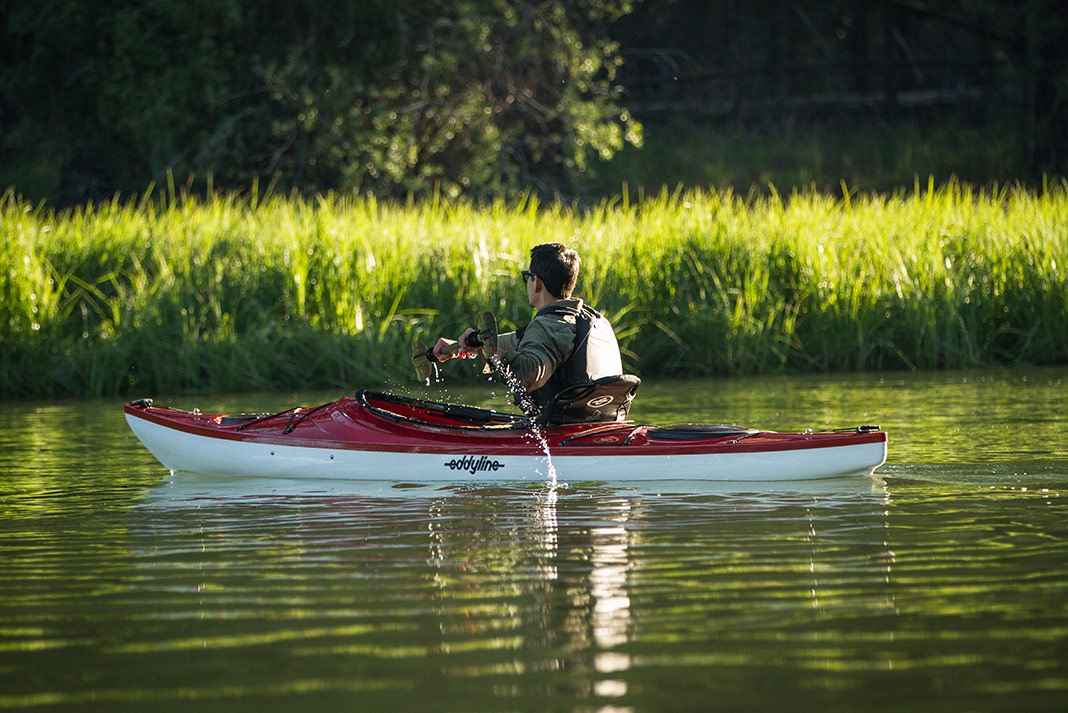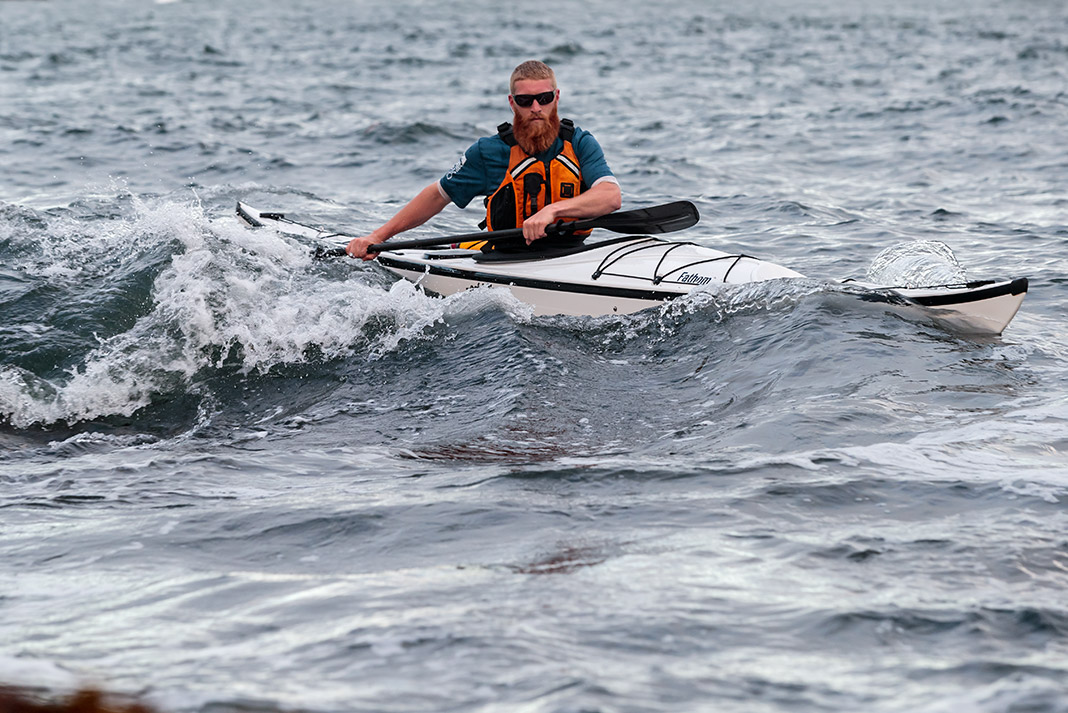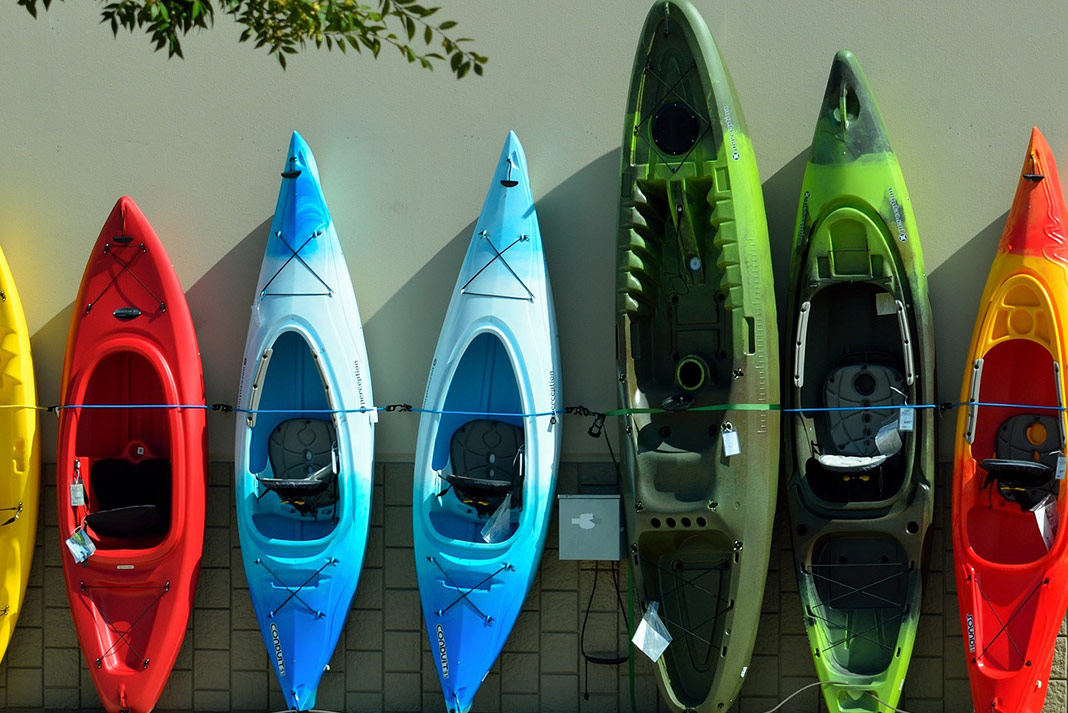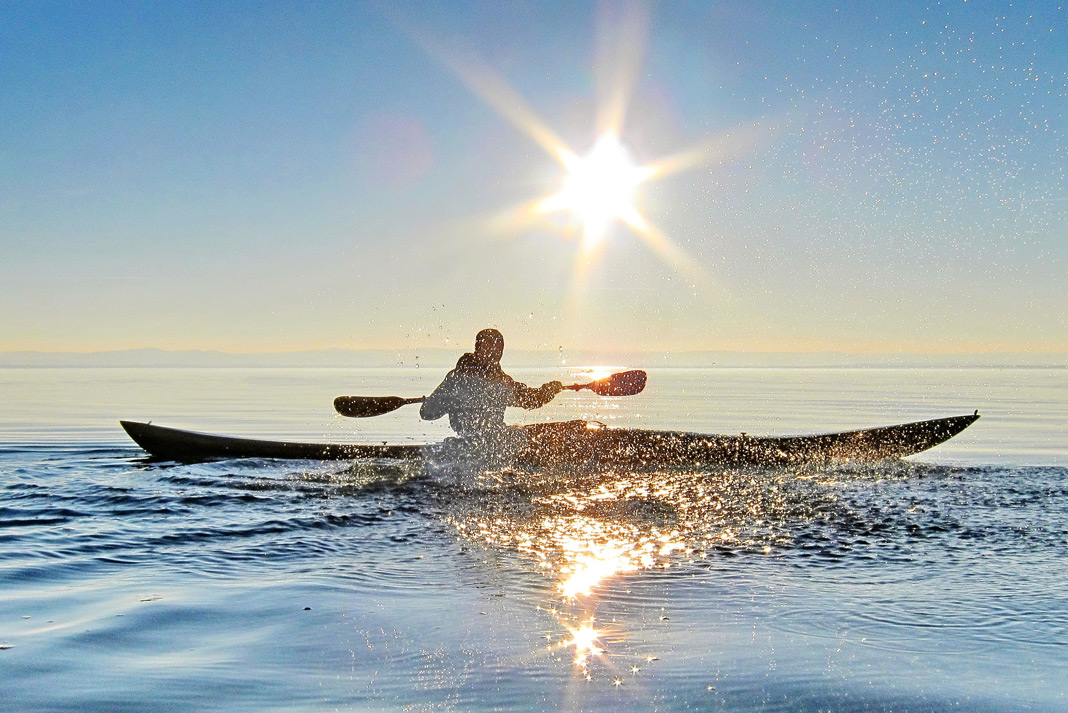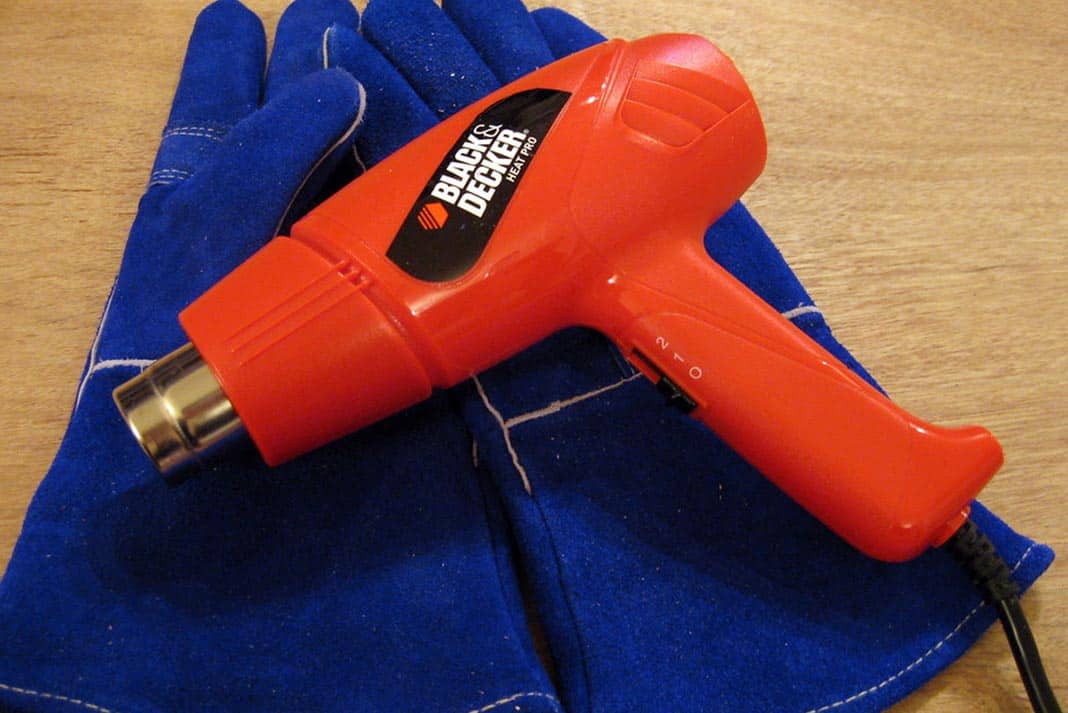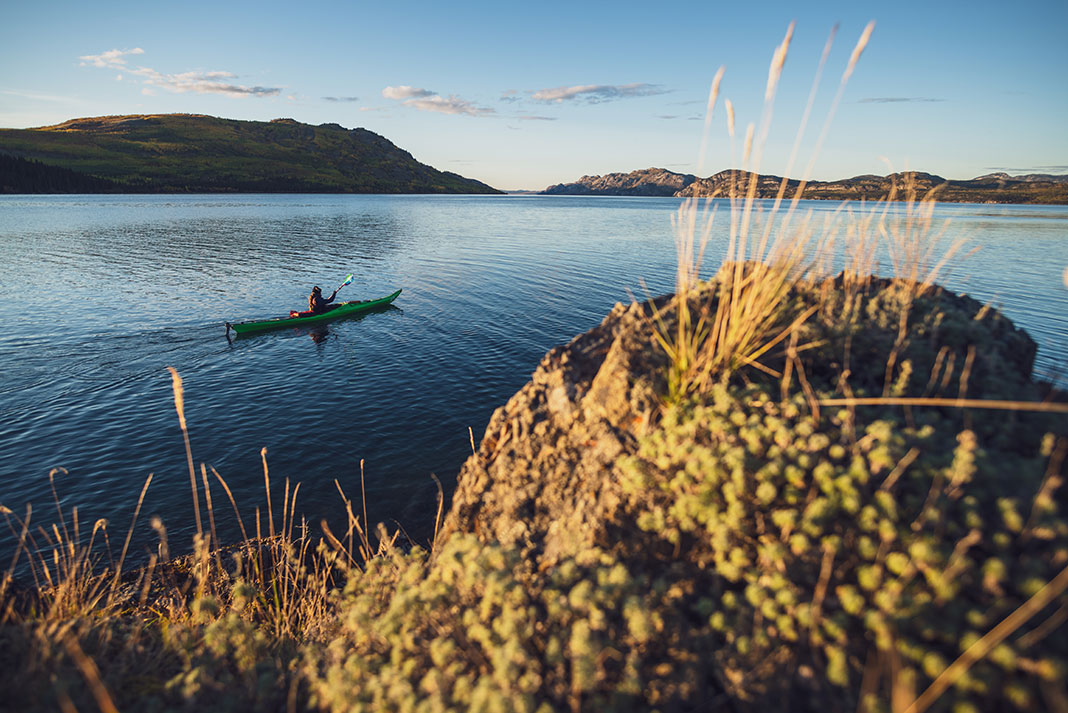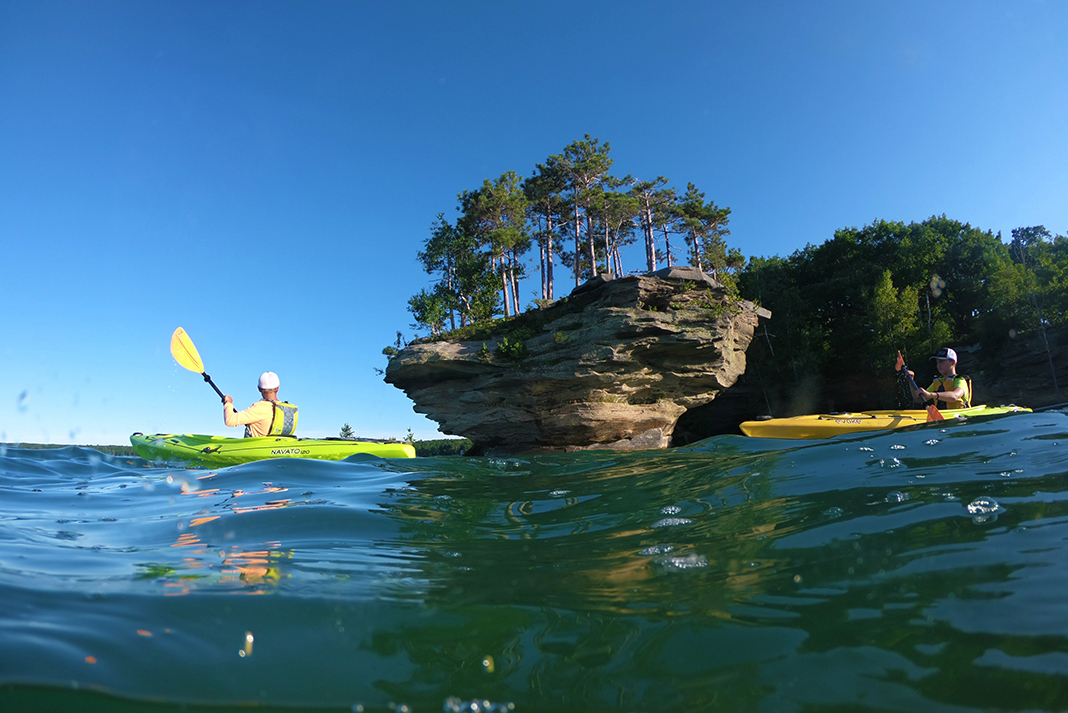There are a number of reasons you may be looking to buy a used kayak. Perhaps you are new to the sport and don’t want to spend money on a new boat until you are sure you like kayaking. Maybe you already own a few kayaks and want to try out a new style for cheap.
Whatever your reason, make sure you are a discerning buyer when looking for a used kayak. Just because you aren’t paying money for a new kayak doesn’t mean you shouldn’t approach the search well informed and ready to analyze what is for sale. Follow our guide on what to look for in a used kayak and start your search for the right boat with confidence.
Buy the right kayak for your paddling preference
Not all kayaks are alike. Design, materials, shape and weight will vary based on the kind of kayaking the boat is intended for. In our Paddling Buyer’s Guide, we group kayaks into recreational, racing and training, and touring categories.
Recreational kayaks
Recreational kayaks are wide, stable and great for beginners, children and those nervous about being on the water. While many have a sunken cockpit with outfitting, some recreational kayaks have open cockpits. These are referred to as sit-on-top kayaks. Recreational kayaks are great for flatwater paddling and short trips.
Touring kayaks
Touring kayaks are longer, narrower and have more storage than recreational kayaks. They are designed for longer trips and come equipped with storage for food and equipment, and hatches with lids that can be removed. Most likely, your touring kayak will be a sit-inside design. They are designed to track well in the water and some will have a skeg or a rudder.
Racing and training
Racing and training kayaks are usually even narrower than touring kayaks and many are made of ultra-light materials like carbon. They are designed for speed and performance; the tradeoff is much less stability than recreational kayaks and less storage than touring kayaks.
VIEW ALL RACING & TRAINING KAYAKS
Give the kayak a once-over
Jack Elliott of White Squall Paddling Centre in Southern Ontario says the first glance you take at a used kayak will tell whether the boat has been looked after. Take special note of frayed ropes, how clean the kayak looks and any indications it has been stored outside.
It’s usually a good sign if the seller handles the boat with care off the water. Neal Ross-Ross, who saw hundreds of boats come and go when he was the manager of Ontario’s Boatwerks kayak shop, says, “If [the seller is] careful with the boat around you while selling it, that’s a good indication they have treated it well.”
After the first glance at a used kayak, make sure to give the kayak a thorough physical once-over. Run your hands over the sides, hull, and decks to check for deformities, dents or weak spots. Keep an eye out for cracks and gouges. Sit in the seat and see if the cockpit outfitting works properly. If the kayak has ratchet straps, crank and loosen them.
Use a flashlight to take a look inside the kayak. Take hatches on and off and see if they seal. Flip the kayak hull-up and see if there is any warping in the hull. Make sure the bulkheads are sound. The shape of a hull affects how the kayak moves in the water. If there is any hull deformity, it means the kayak will not perform the way it was designed to.
There is a difference between a well-used boat, and an abused boat. Sometimes these differences can be hard to spot or read. “What I’m looking for is…the condition of the outfitting, or are there any cracks,” explains Ross-Ross. “Determining what is actually broken versus what is just roughed up.”
Try to determine how the kayak was stored
The next item of business is determining how the boat has been stored. Improper storage can affect the value and functionality of the kayak.
Ideally, the seller has stored the kayak off the ground and out of the sun. The hull of a kayak is very vulnerable to deformity, especially on plastic boats. If a kayak is stored on its hull it means the performance-dependent part of the boat takes the full weight. A kayak suspended with webbing, standing up against a wall, cockpit down and supported on a rack or leaning on its side will be less susceptible to storage-related damage.
If the kayak has been stored outside, it is possible water has gotten inside the cockpit if a cover wasn’t used. Also, be wary of a kayak sitting outside for months covered directly with a tarp; the tarp can trap moisture and cause mildew. Tarps should be hung or suspended above the kayak, but not directly touching it to allow for airflow.

Take the kayak for a test paddle
Perhaps the best piece of advice for buying a used kayak is to take it for a paddle. You wouldn’t want to purchase a car without driving it, and the same should be true for your kayak.
While obvious impediments to a kayak’s seaworthiness like major gouges or holes will be clear from the once-over, a test paddle can indicate other problems and give you an idea of how the kayak feels for you. If a seller refuses to let you take the kayak for a paddle, you may want to consider why.
Once on the water, ask yourself:
- Is the seating comfortable? Would it continue to be comfortable if you were kayaking all day?
- Are your legs falling asleep? Do your hips and knees feel comfortable with the amount of space you have?
- How well does the kayak track?
- Are you noticing any leaks while paddling?
- Are the skeg and rudder cables working well? Do the pedals connected to each work? Does the skeg get jammed?
- Is the kayak stable enough for you?
- Can you maneuver the kayak to your needs? Is it fast or do you feel it’s holding you back?
Potential damage on different kinds of used kayaks
Damage on a used kayak doesn’t necessarily need to be a deal-breaker. What is important is that you are aware of it, understand it may reduce the value and factor it into discussions about price with the seller.
Many issues can be fixed at home with a little bit of time and research and can lengthen the life of a kayak. For instance, if you find a kayak that is structurally in good shape but has a broken backband, you can buy a replacement for about $100 and increase the value.
Polyethylene kayaks
Polyethylene kayaks are cheap, high impact and heavy. These kayaks are the most vulnerable to deformity and hull warping. Surface scratches are common on these kayaks and are not a big deal, but major gouges and holes can affect the function of the kayak on the water. The vulnerability of plastic kayaks to hull deformity can lead to decreased performance on the water and flex of the boat while paddling.
At Ontario’s Frontenac Outfitters, sales and marketing coordinator Cory Davis and owner Larry Showler agree that polyethylene will show more wear than other kayak materials because it has less rigidity. In terms of repair, they say you can use something heated to blend out gouges and suggest razorblades to take off fuzzy bits of plastic.
Composite: Aramid, fiberglass and carbon kayaks
Composite kayaks are made from fiberglass, aramid and carbon. They are stiffer, lighter and more expensive than their polyethylene counterparts. In terms of weight, fiberglass composite kayaks are typically the heaviest, aramid is middle of the pack and carbon fiber kayaks are the lightest. Depending on the manufacturer of the composite kayak, however, this can be subject to variation.
They can also be easier to damage than polyethylene kayaks. Potential damage can include chipping of the gel coat, delamination and cracking. Remember that cracking and scratches are different. Cracking will be deeper while scratches are superficial and will not allow water to seep into the inside layers of the composite or even into the interior of the boat. You can sand, polish and add more gel-coat to your composite kayak to get rid of scratches.
Thermoform kayaks
Thermoform kayaks are heavier and not as expensive as composites. They are more impact-resistant than polyethylene kayaks, but less so than composites. People who like thermoformed kayaks enjoy that they are usually more inexpensive than composite boats but are lighter than polyethylene. They also have better glide and are stiffer.
Similar to the above two construction materials, scratches are normal, and holes or gouges and other obvious signs of damage can affect seaworthiness. The ABS on these kayaks can become brittle over time, especially if left out in the sun frequently.
Wooden kayaks
Wooden kayaks make up just a tiny portion of the used kayak market, but many who own them enjoy the process of taking care of and maintaining them. Similar to wooden canoes, wooden kayaks are susceptible to rot. This is where determining how the kayak was stored is key.
Be wary of a wooden kayak stored outside on the ground all winter. Wood rot isn’t always obvious. While it can sometimes be identified by spotting or discolored wood, it is also possible rot is inside the wood and the glossy exterior you see looks fine. Chips, cracks or gouges should also be noted.
Condition of the used kayak’s accessories and parts
There are many accessories and add-ons to a kayak. When buying, a used kayak may come with or without the following. Consider that when deciding if the price is appropriate.
Rudder
A rudder is attached to the stern of a kayak and has cables the paddler can control with foot pedals from inside the cockpit. Rudders control direction. Check to see if the rudder is in good condition by getting in the kayak on the water and using foot pedals to move it side to side. If it is stiff, it takes a lot of effort to move the rudder or it doesn’t move at all, it needs some work.
Skeg
A skeg is a blade that comes down from a compartment near the kayak’s stern and aids tracking and trimming in the wind. The depth is often controlled by a cable the paddler can adjust from inside the cockpit.
Make sure when you test paddle the kayak that you test the cables function properly, and inspect the skeg itself for cracks or damage.
Deck rigging
Deck lines and rigging refers to the ropes or cords that crisscross the kayak deck. The function of deck rigging ranges from providing grab holds to allowing a spot for paddlers to attach water bottles, map bags and paddles to enabling the use of rudders and skegs. Lines and ropes that are frayed or falling apart may indicate the kayak hasn’t been taken care of.
Hatches
Elliott from White Squall Paddling Centre explains hatches made from rubber can degrade quickly, especially if left out in the sun. Some hatches can be replaced, but some companies will not sell the right replacements for older models.
Elliott has a kayak he really likes, but the rear hatch replacement he needs is unavailable, rendering the kayak essentially useless. If you are seriously considering a used kayak and there is a problem with the hatch—or any other part—make sure the boat maker still manufactures replacements.
How much does a used kayak cost?
The feel of a kayak and how well it fits your needs should be the priority when buying a used kayak, not the price. Showler and Davis feel used kayak shoppers should avoid beginning their search with a price in mind. They say it is key to find the right boat and make enjoyment and fit the most important factor.
Kayaks tend to hold their value quite well and stand up against rapid depreciation if they are taken care of. When considering and negotiating price, find the exact model of the kayak in question (you can check our Paddling Buyer’s Guide) and find out what it costs new.
Elliot says that while the price of a used kayak is always changing, they depreciate about 50% five years after being bought new.
Factor in the age of the used kayak you are looking at and consider the damage or issues you have identified. Lastly, make sure you prioritize the comfort and suitability of the kayak to your paddling needs. $200 over your budget will feel insignificant when you are the owner of a perfectly fitted kayak that performs exactly how you want it to for years to come.
Places to buy used kayaks
There’s no one best place to find used kayaks. Local paddling shops will often sell off rental boats at the end of the season—this can be a great option for finding (and testing) a used kayak. Then of course there are garage sales, Classified ads, and talking to local paddlers.
The internet greatly widens your search radius and allows you to comb through many listings in short order. Check Facebook Marketplace, community buy and sell Facebook pages, Kijiji, Craigslist and Ebay to buy used kayaks online.




